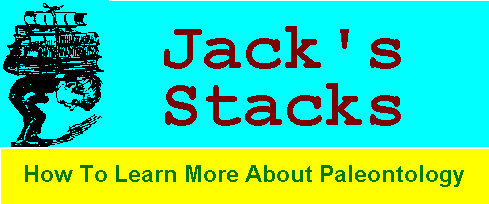
Potter’s work is a newer more readable version of the 1916 Geology of Cincinnati and Vicinity by UC Geology Professor Nevin M. Fenneman (Bulletin 19, Ohio Geological Survey). Fenneman’s book is more detailed, longer, and a bit harder to read. I think the writing style of the period is what makes this more difficult reading. The newer book makes excellent use of many types of illustrations that help produce a faster understanding in the reader.
Exploring the Geology of the Cincinnati/Northern Kentucky Region gives the reader a broad general understanding of the local geology. For those of us who tend to be more interested in the fossils it is a perfect match. It tells us what we want to know with just enough detail to get the information across. Actually, it tells us what we should know about local geology to better understand the meaning of our fossils. I won’t list all of the chapters and topics covered but will highlight those of greatest interest to the Dredgers.
"Yesterday’s Pioneers" mentions names we should be familiar with such as Locke, Orton, Twenhoffel, Fenneman, Meek, S. A. Miller, Ulrich, Foerste, Nickels, Bassler, Shaler, Schuchert, and Shidler. The importance and contributions of these individuals are briefly mentioned.
"Outcropping Formations" deals with our favorite Cincinnatian limestones and shales. This section is one of the most important for us since it deals with the descriptions of the formations. Depositional environments, the shale - limestone cycles, water depth, the time it took to deposit the Cincinnatian sediments and many other interpretations are given. This chapter can give you more of an appreciation of the fossils and why they change from formation to formation. The descriptions may also help you recognize the formations more readily in the field.
"Geologic Structure and the Cincinnati Arch" gives a brief synopsis of the formation of this very important feature. Without it we’d be collecting those nasty Devonian trilobites.
"Geologic History and Influence of Far-Distant Events" covers the influences of Plate Tectonics and how continental collisions and rifting created the Paleozoic world that brings us our abundant Cincinnatian fossils.
"Geologic Hazards" deals with landslides and erosion. Both of these forces cause problems for cities and landowners but are a boon to the local fossil collector.
"Field Work in the Cincinnati Region" lists numerous publications which the reader can seek out which could lead to collecting sites you may not have known about. Included in this list is the Davis and Cuffey guide from the 1992 GSA conference; maybe some day we’ll get to see this one (it’s still "in press").
Although I didn’t mention numerous chapters I urge you not to skip them when reading Potter’s book. The chapters do tend to build on one another. Some chapters are as short as two pages while the longest is eight pages. There are 87 figures, 14 tables and a six page glossary. Each chapter has a list of references for more in depth reading. These items and Potter’s very readable text make this an excellent reference and learning tool for our local amateur geologists.